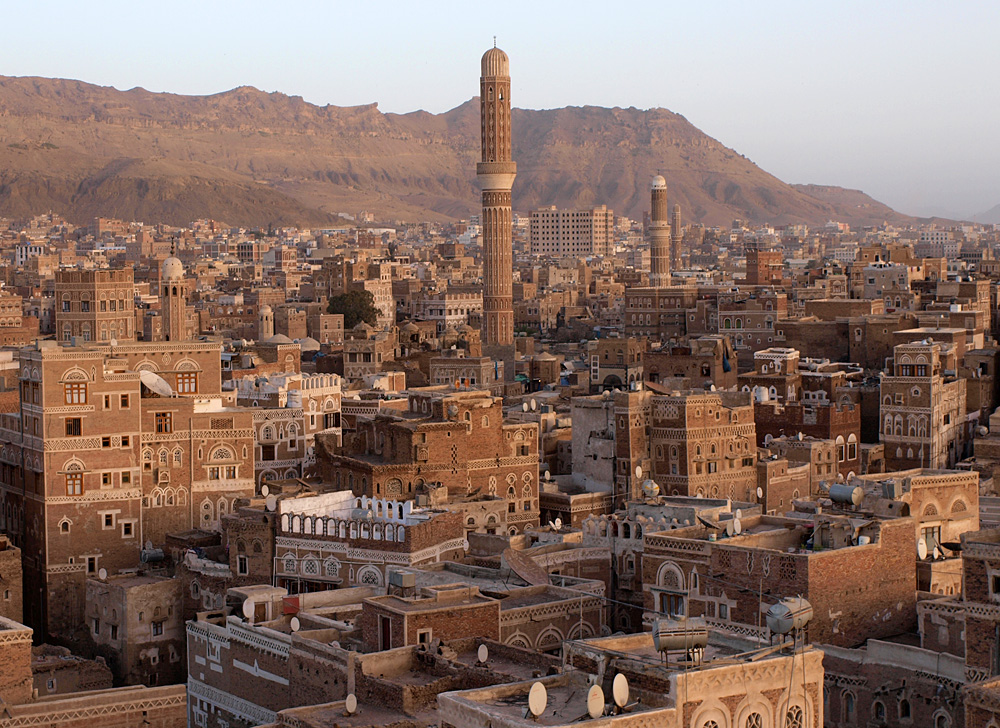|
Revolution Hospital
Revolution Hospital is the largest hospital in Yemen, located in the capital of Sana'a, immediately southwest of Ghumdan Palace. It is one of the largest building complexes in the city. This hospital may also be known as Al Thawra Revolution Hospital. See also *Health in Yemen **List of hospitals in Yemen The following is a list of hospitals in Yemen. NotableSee Wikipedia:WikiProject Hospitals/Tutorials#Notability for a description criteria for a notable hospital. hospitals are listed, including name, address, city and references. Links to arti ... References Buildings and structures in Sanaa Hospitals in Yemen {{Asia-hospital-stub ... [...More Info...] [...Related Items...] OR: [Wikipedia] [Google] [Baidu] |
Sana'a
Sanaa ( ar, صَنْعَاء, ' , Yemeni Arabic: ; Old South Arabian: 𐩮𐩬𐩲𐩥 ''Ṣnʿw''), also spelled Sana'a or Sana, is the capital and largest city in Yemen and the centre of Sanaa Governorate. The city is not part of the Governorate, but forms the separate administrative district of "ʾAmānat al-ʿĀṣima" (). Under the Yemeni constitution, Sanaa is the capital of the country, although the seat of the Yemeni government moved to Aden, the former capital of South Yemen in the aftermath of the Houthi occupation. Aden was declared as the temporary capital by President Abdrabbuh Mansur Hadi in March 2015. At an elevation of , Sanaa is one of the highest capital cities in the world and is next to the Sarawat Mountains of Jabal An-Nabi Shu'ayb and Jabal Tiyal, considered to be the highest mountains in the country and amongst the highest in the region. Sanaa has a population of approximately 3,937,500 (2012), making it Yemen's largest city. As of 2020, the greater ... [...More Info...] [...Related Items...] OR: [Wikipedia] [Google] [Baidu] |
Yemen
Yemen (; ar, ٱلْيَمَن, al-Yaman), officially the Republic of Yemen,, ) is a country in Western Asia. It is situated on the southern end of the Arabian Peninsula, and borders Saudi Arabia to the Saudi Arabia–Yemen border, north and Oman to the Oman–Yemen border, northeast and shares maritime borders with Eritrea, Djibouti, and Somalia. Yemen is the second-largest Arabs, Arab sovereign state in the peninsula, occupying , with a coastline stretching about . Its constitutionally stated Capital city, capital, and largest city, is Sanaa. As of 2021, Yemen has an estimated population of some 30.4 million. In ancient times, Yemen was the home of the Sabaeans, a trading state that included parts of modern-day Ethiopia and Eritrea. Later in 275 AD, the Himyarite Kingdom was influenced by Judaism. Christianity arrived in the fourth century. Islam spread quickly in the seventh century and Yemenite troops were crucial in the early Islamic conquests. Several Dynasty, dynasties ... [...More Info...] [...Related Items...] OR: [Wikipedia] [Google] [Baidu] |
Ghumdan Palace
Ghumdan Palace, also Qasir Ghumdan or Ghamdan Palace, is an ancient palace and fortress in Sana'a, Yemen. It is the earliest known castle in the world. All that remains of the ancient site (Ar. ''khadd'') of Ghumdan is a field of tangled ruins opposite the first and second of the eastern doors of the Jami‘ Mosque (Great Mosque of Sana'a). This part of Sana'a forms an eminence which is known to contain the debris of ancient times. The place is located on the extreme southeastern end of Sana'a's old walled city, ''al-Qaṣr'', just west of where the Great Mosque of Sana'a was later built, and is part of the UNESCO World Heritage Site of the Old City of Sana'a. It is sometimes referred to as ''Ghumdan Tower''. According to Arab geographer and historian, Al-Hamdani (c. 893-945), the foundation stones of Ghumdan Palace were laid by Shem, the son of Noah, and finished by the Sabaean monarch Ilī-Sharḥa Yaḥḍib (ca. 8th century BCE), the father of Bilqis. Others say that it was bu ... [...More Info...] [...Related Items...] OR: [Wikipedia] [Google] [Baidu] |
Health In Yemen
Despite the significant progress Yemen has made to expand and improve its health care system over the past decade, the system remains severely underdeveloped. Total expenditures on health care in 2002 constituted 3.7 percent of gross domestic product. In that same year, the per capita expenditure for health care was very low, as compared with other Middle Eastern countries—US$58 according to United Nations statistics and US$23 according to the World Health Organization. According to the World Bank, the number of doctors in Yemen rose by an average of more than 7 percent between 1995 and 2000, but as of 2004 there were still only three doctors per 10,000 persons. In 2003 Yemen had only 0.6 hospital beds available per 1,000 persons.Yemen country profile |
List Of Hospitals In Yemen ...
The following is a list of hospitals in Yemen. NotableSee Wikipedia:WikiProject Hospitals/Tutorials#Notability for a description criteria for a notable hospital. hospitals are listed, including name, address, city and references. Links to articles in Wikipedia are included when they exist. Notable hospitals References {{Asia topic, List of hospitals in Yemen * Hospitalsi Yemen Yemen (; ar, ٱلْيَمَن, al-Yaman), officially the Republic of Yemen,, ) is a country in Western Asia. It is situated on the southern end of the Arabian Peninsula, and borders Saudi Arabia to the Saudi Arabia–Yemen border, north and ... [...More Info...] [...Related Items...] OR: [Wikipedia] [Google] [Baidu] |
Buildings And Structures In Sanaa
A building, or edifice, is an enclosed structure with a roof and walls standing more or less permanently in one place, such as a house or factory (although there's also portable buildings). Buildings come in a variety of sizes, shapes, and functions, and have been adapted throughout history for a wide number of factors, from building materials available, to weather conditions, land prices, ground conditions, specific uses, prestige, and aesthetic reasons. To better understand the term ''building'' compare the list of nonbuilding structures. Buildings serve several societal needs – primarily as shelter from weather, security, living space, privacy, to store belongings, and to comfortably live and work. A building as a shelter represents a physical division of the human habitat (a place of comfort and safety) and the ''outside'' (a place that at times may be harsh and harmful). Ever since the first cave paintings, buildings have also become objects or canvasses of much art ... [...More Info...] [...Related Items...] OR: [Wikipedia] [Google] [Baidu] |



